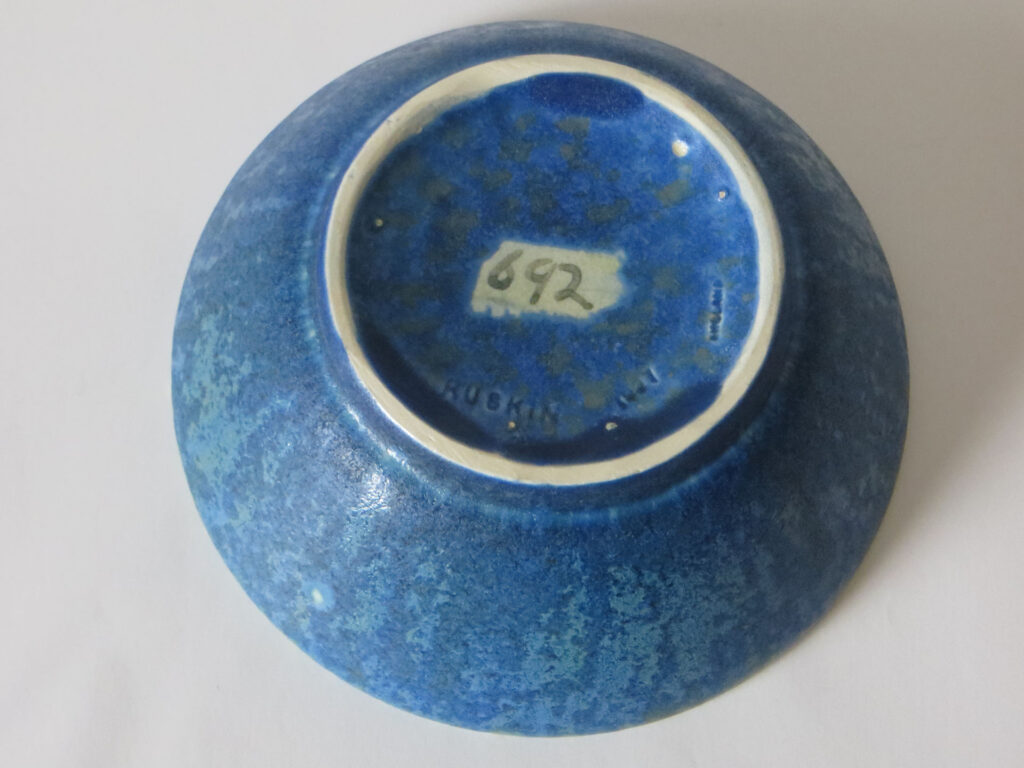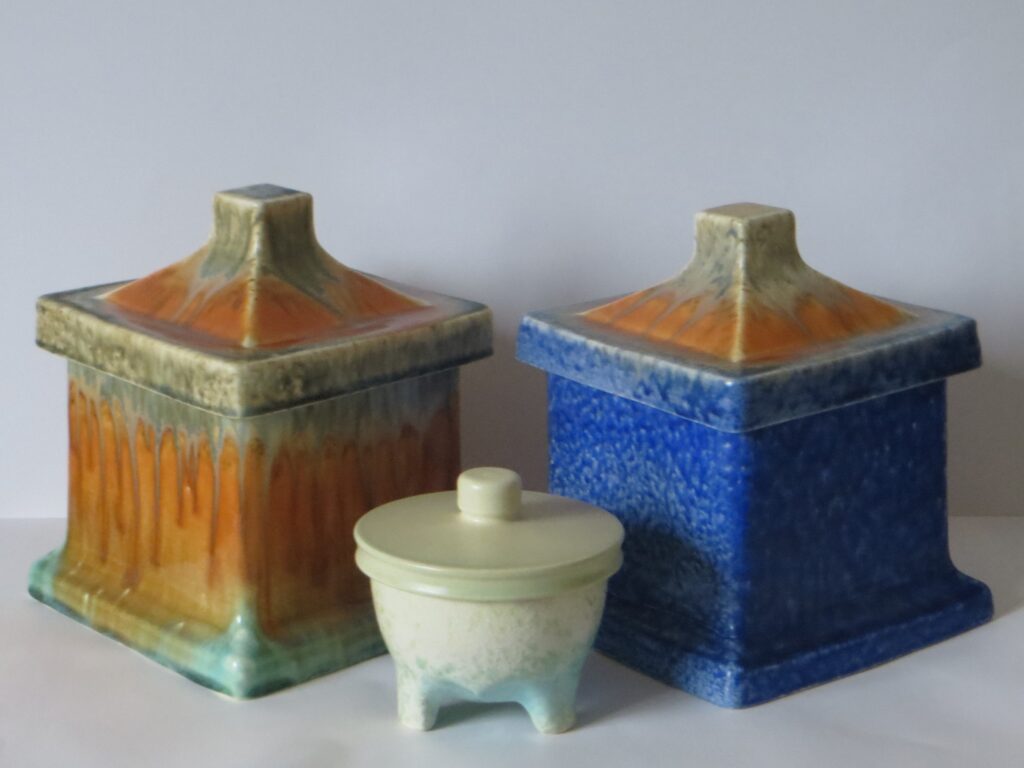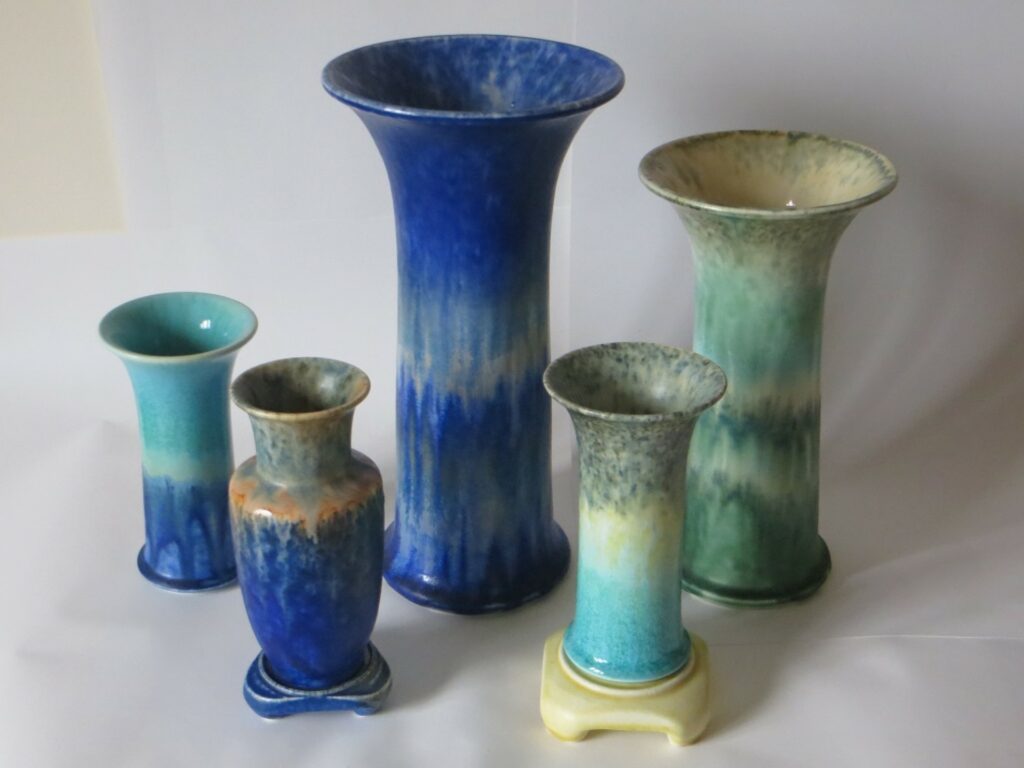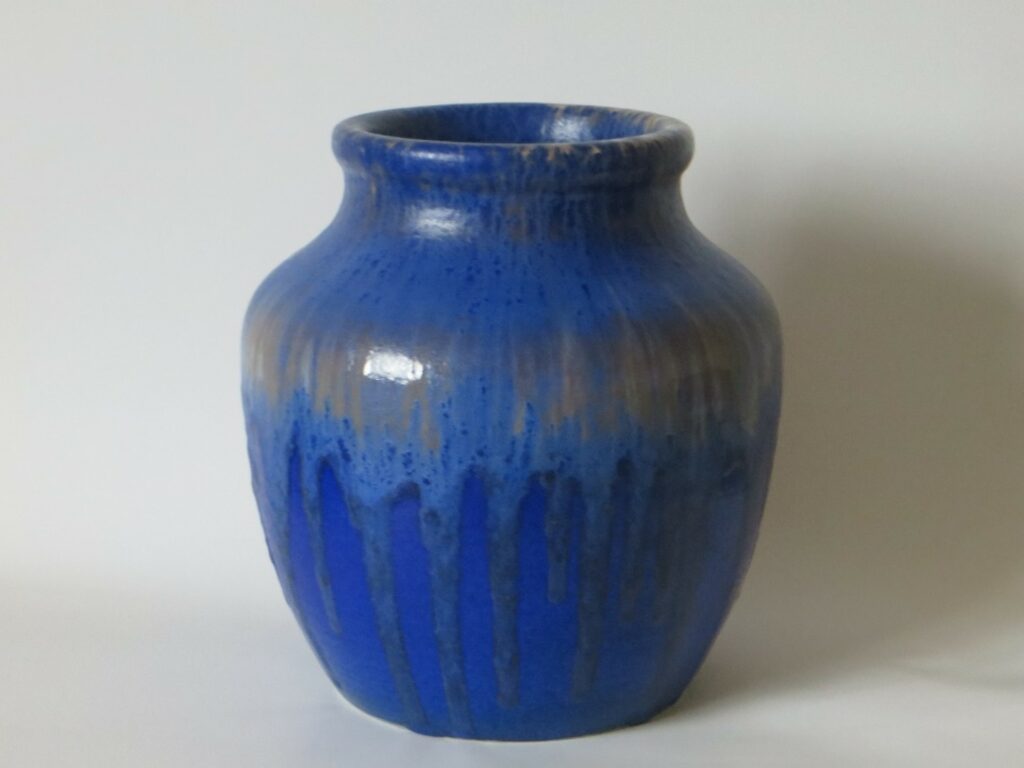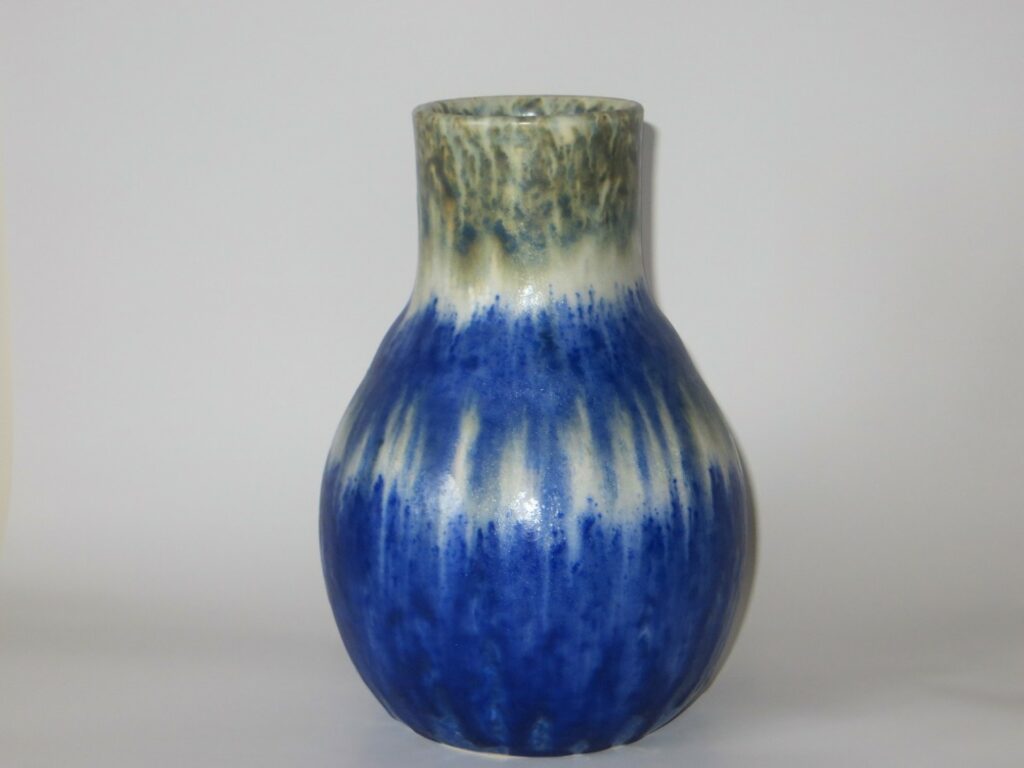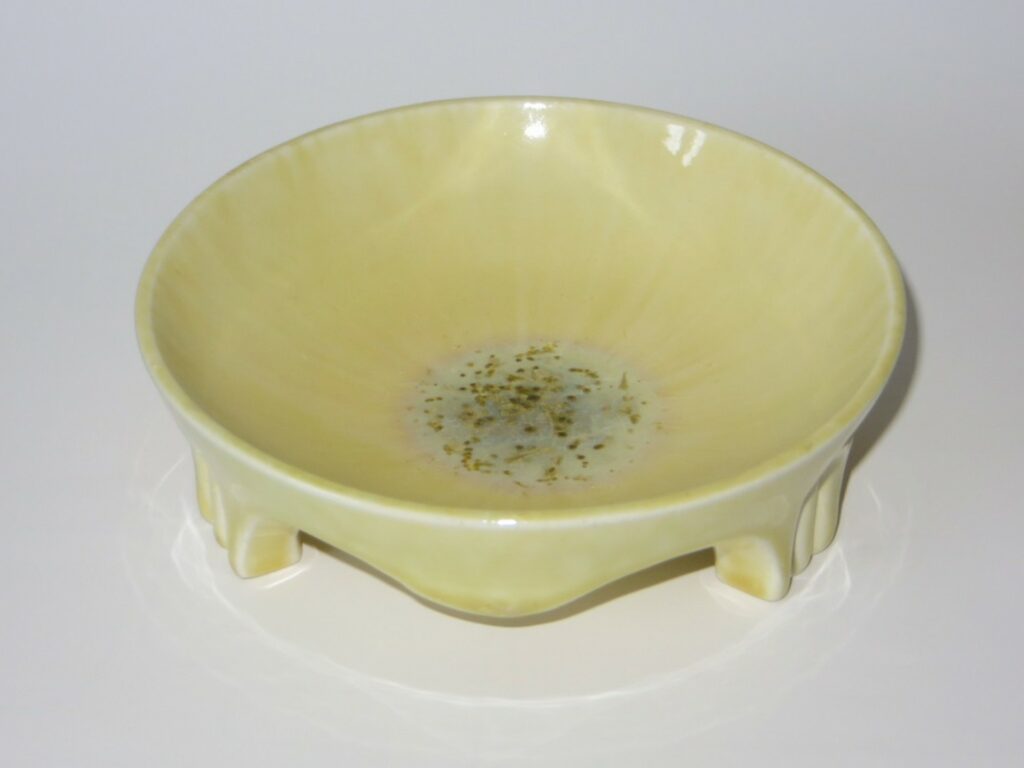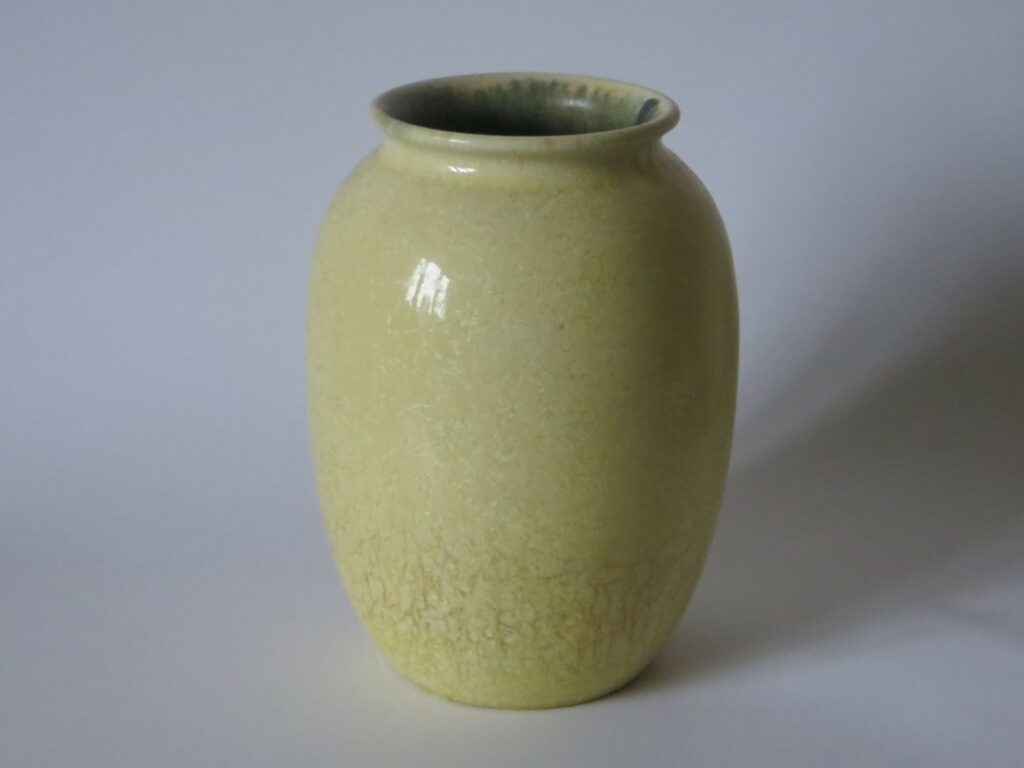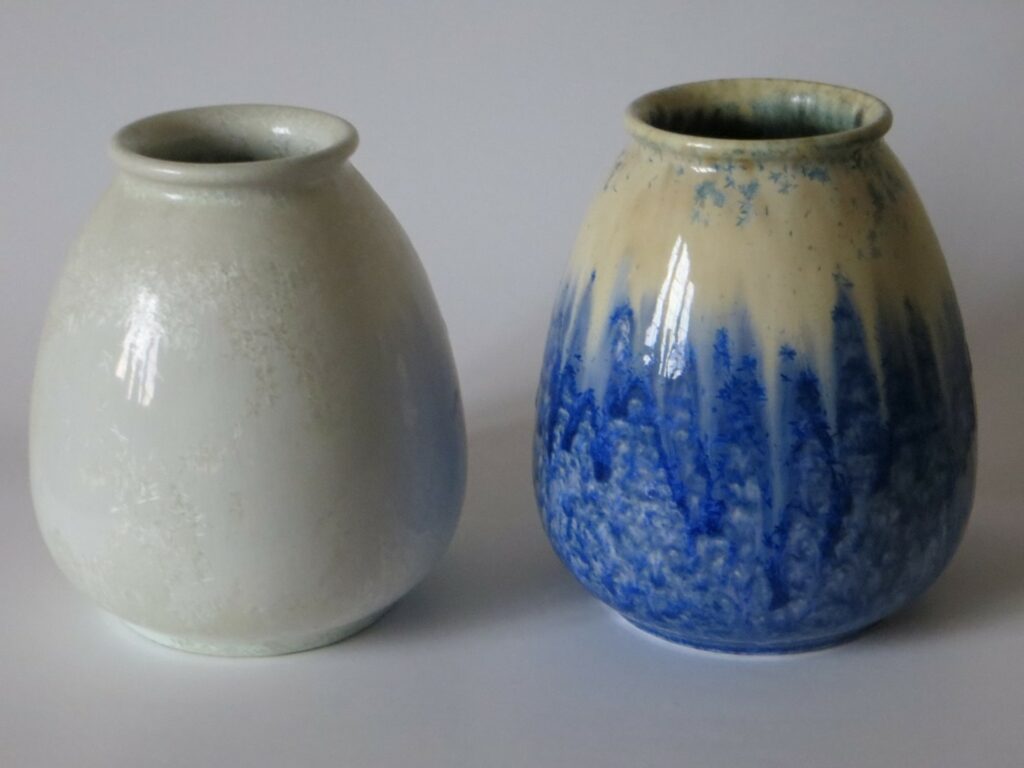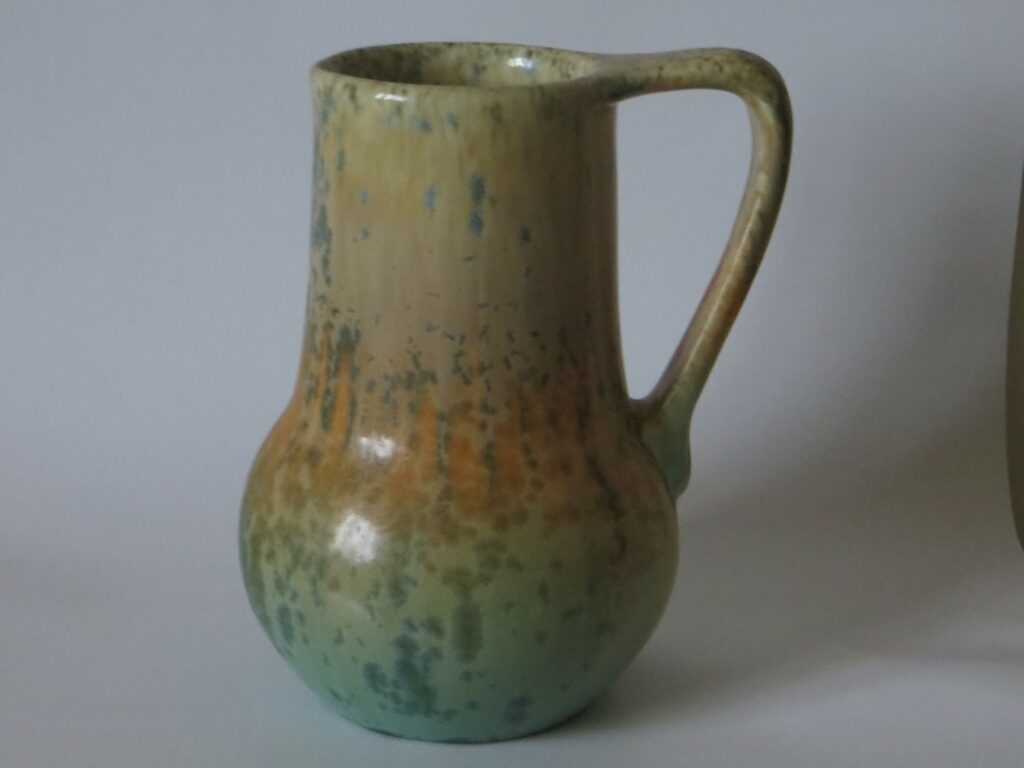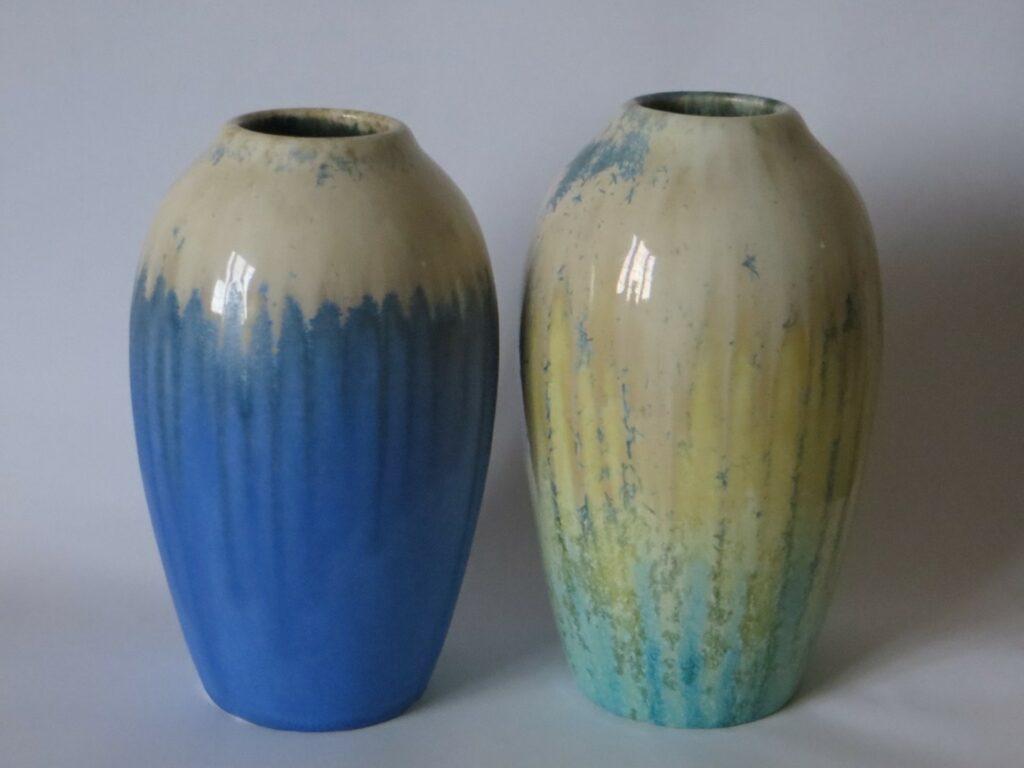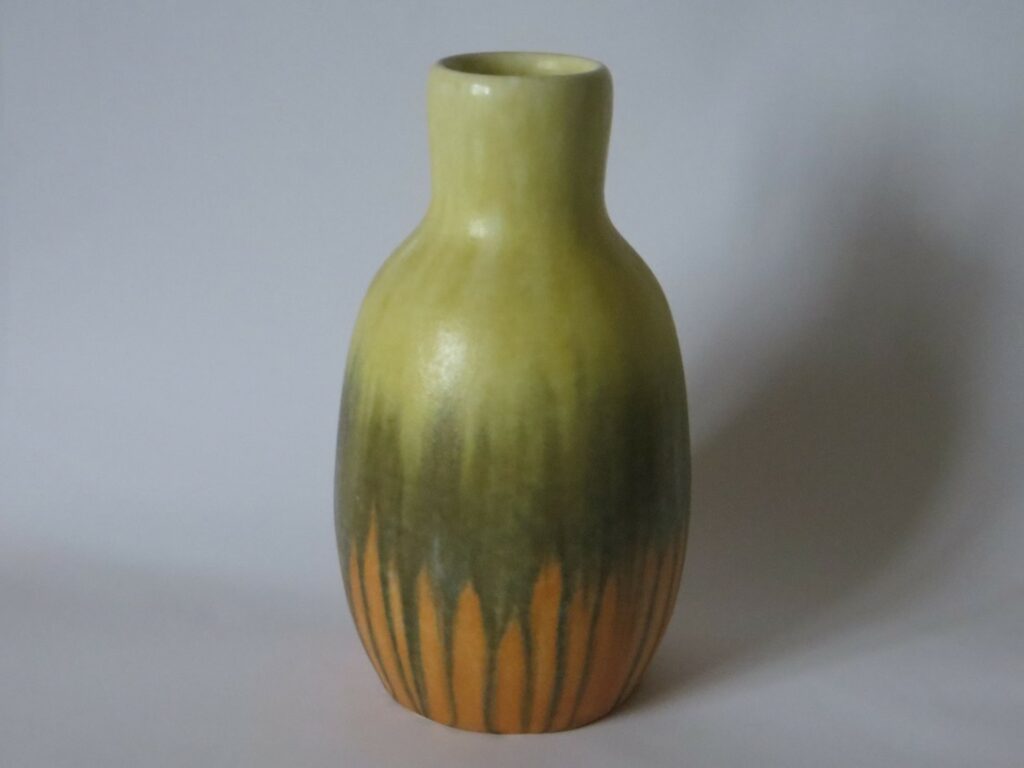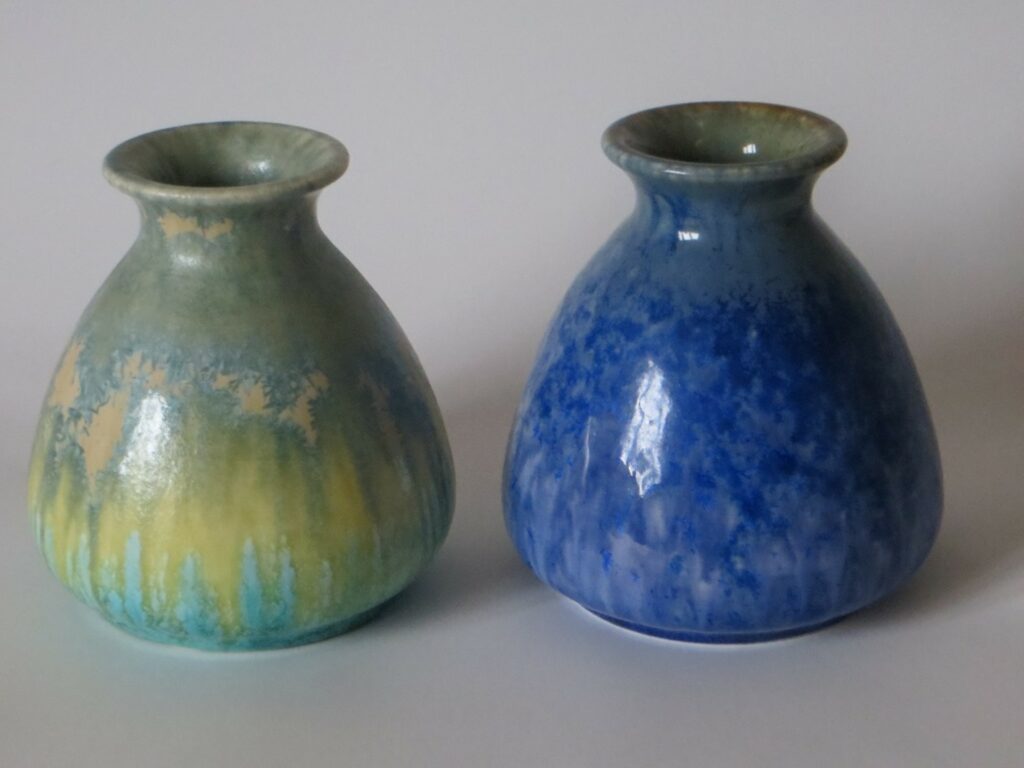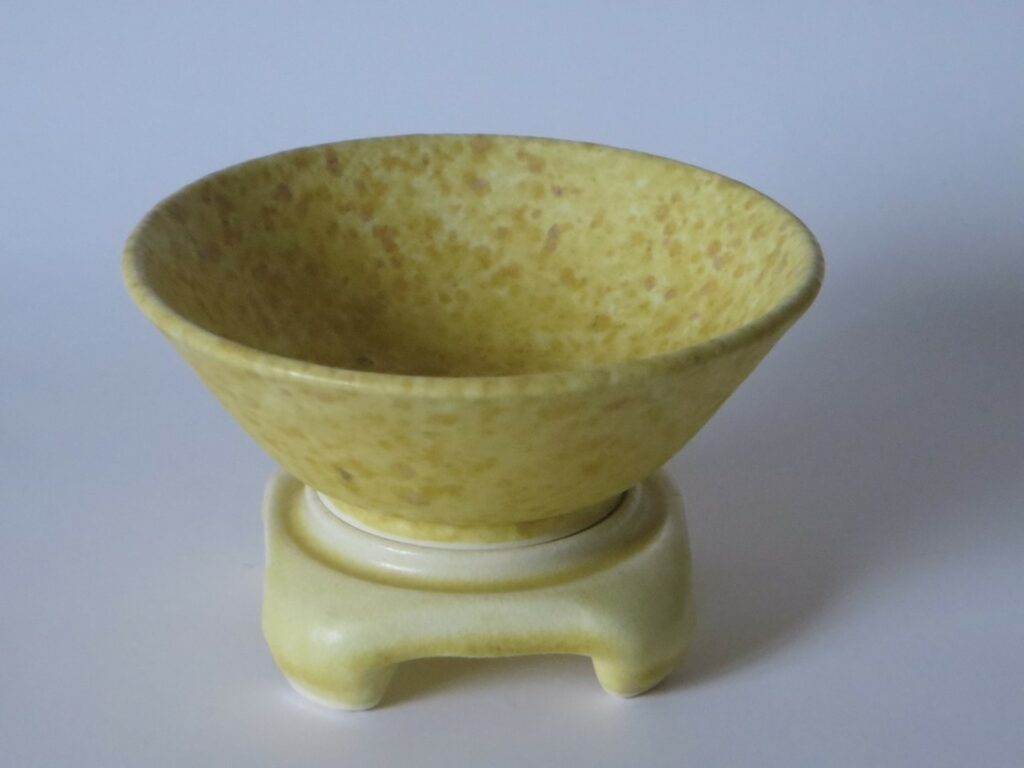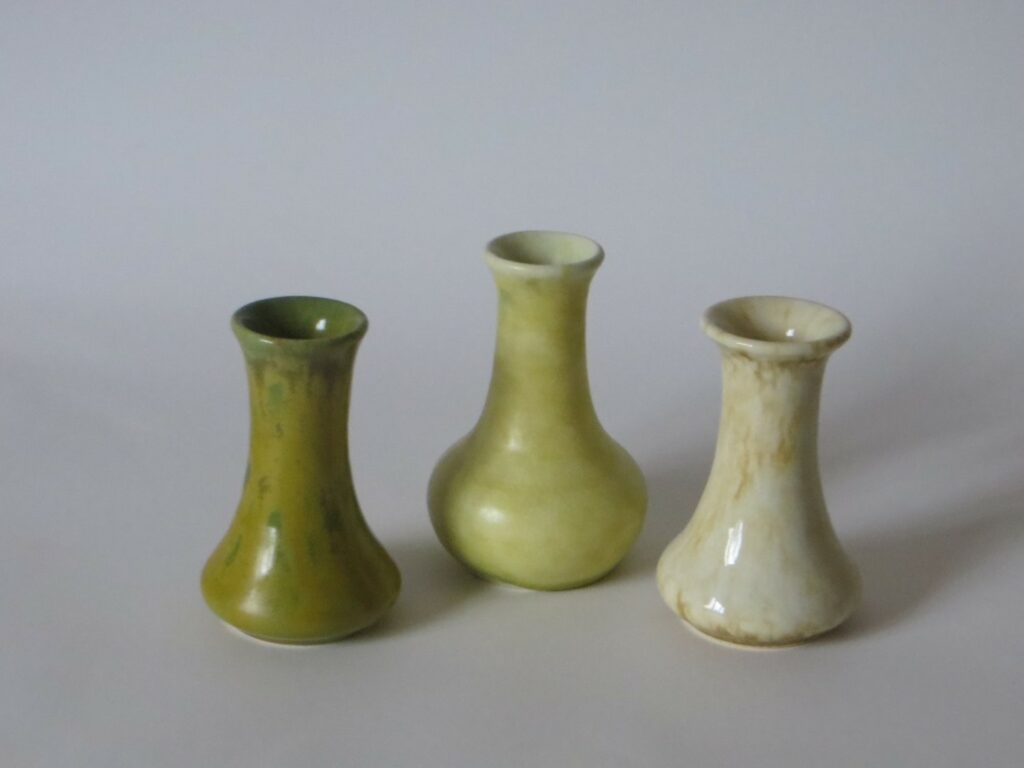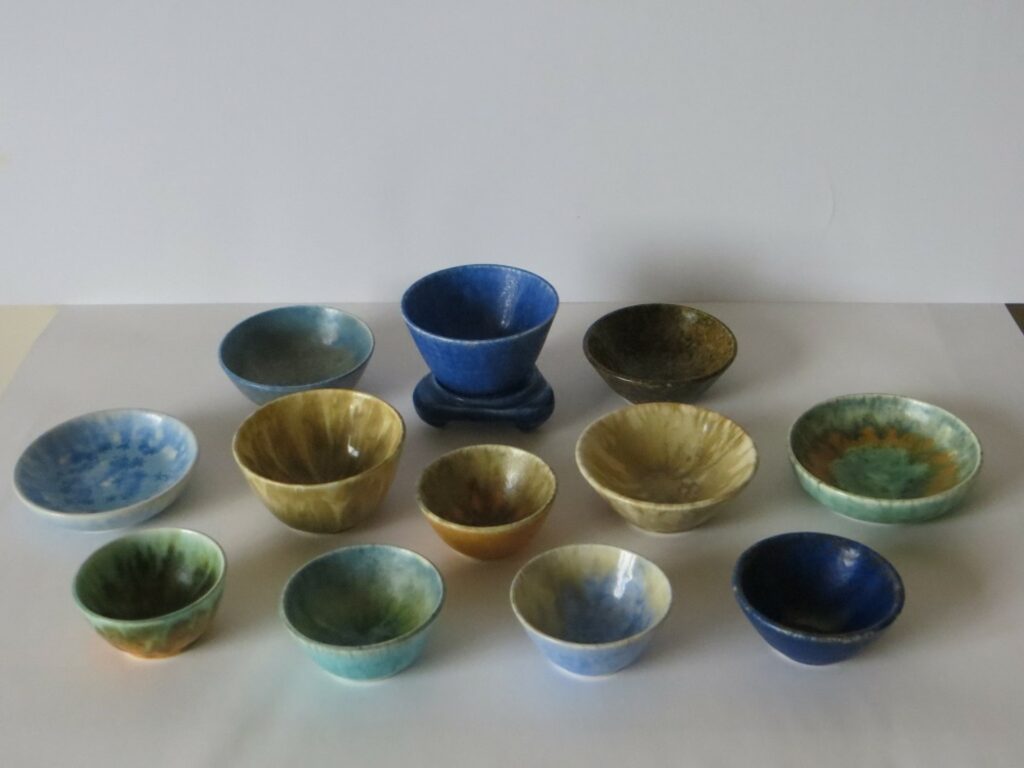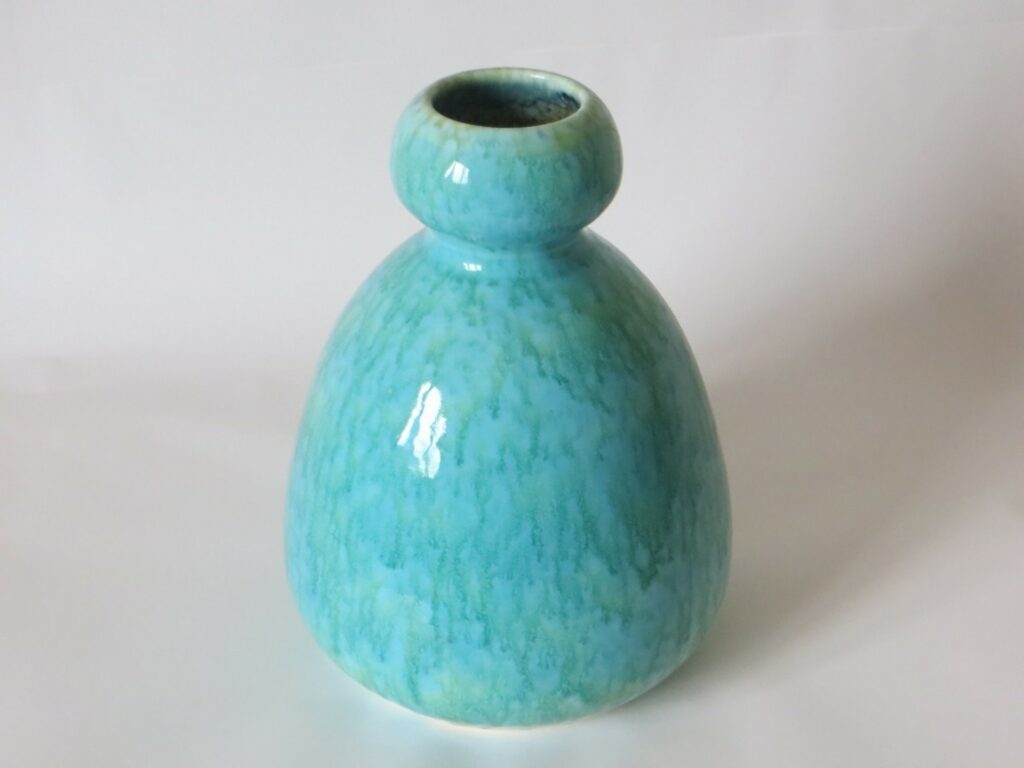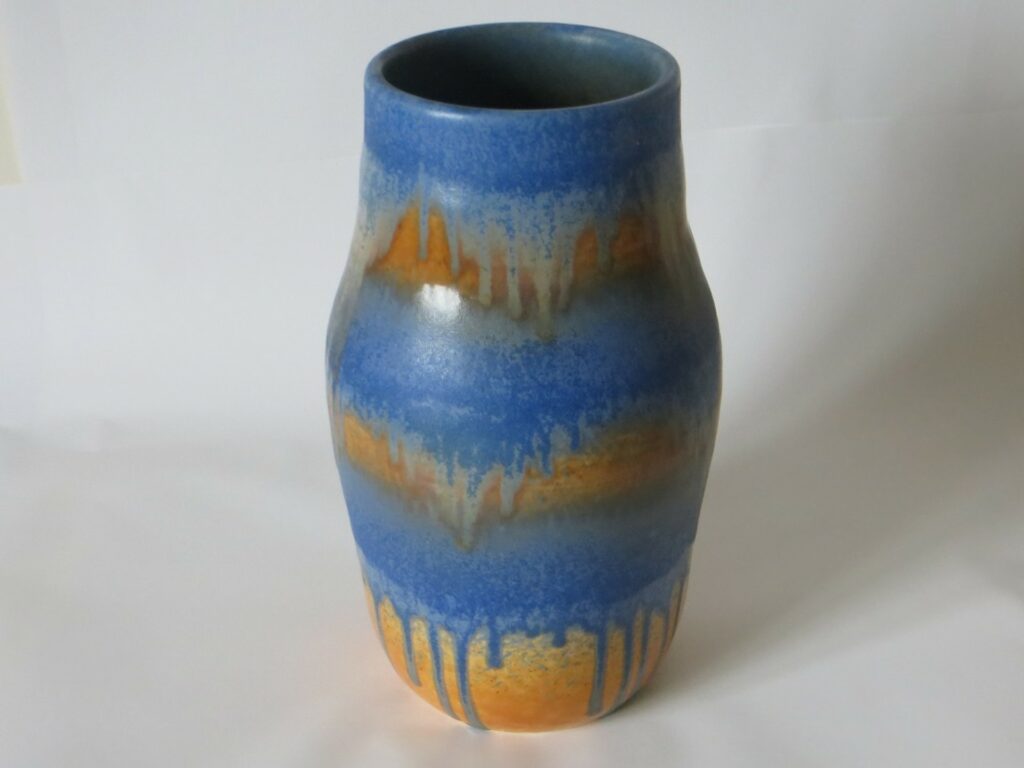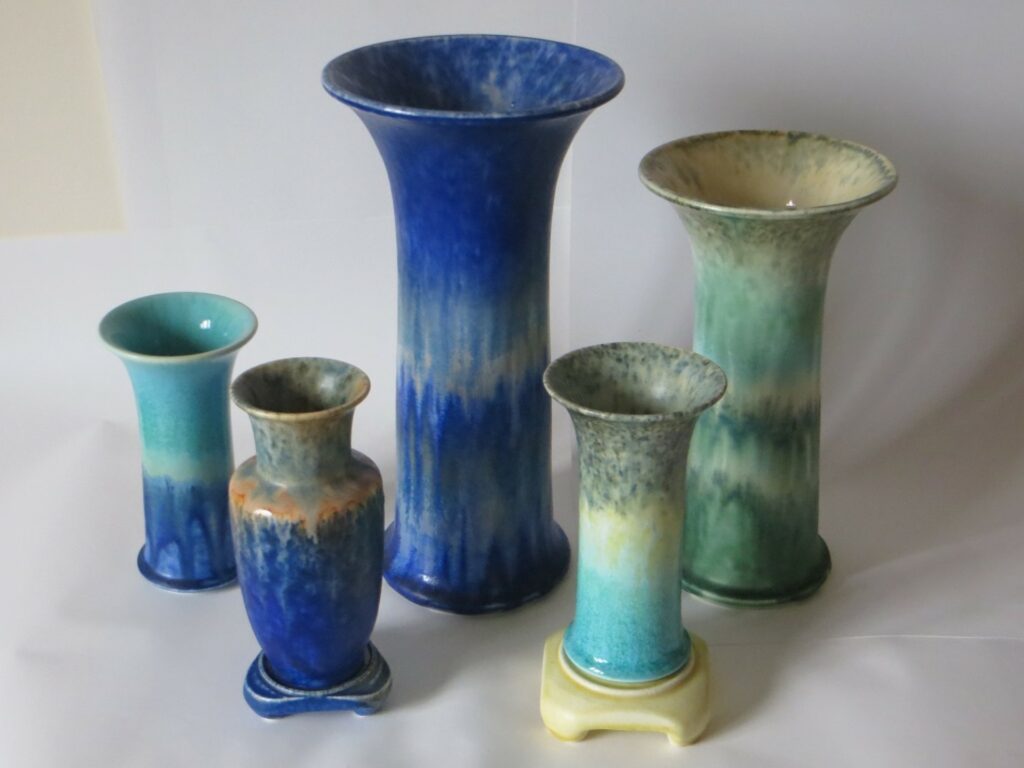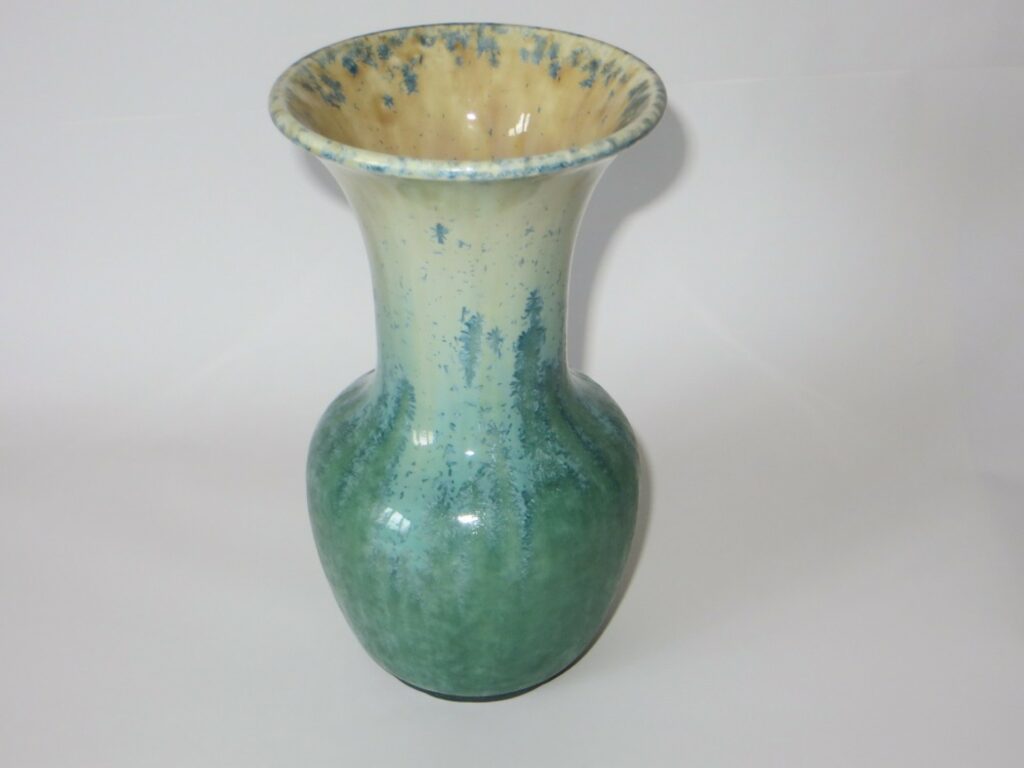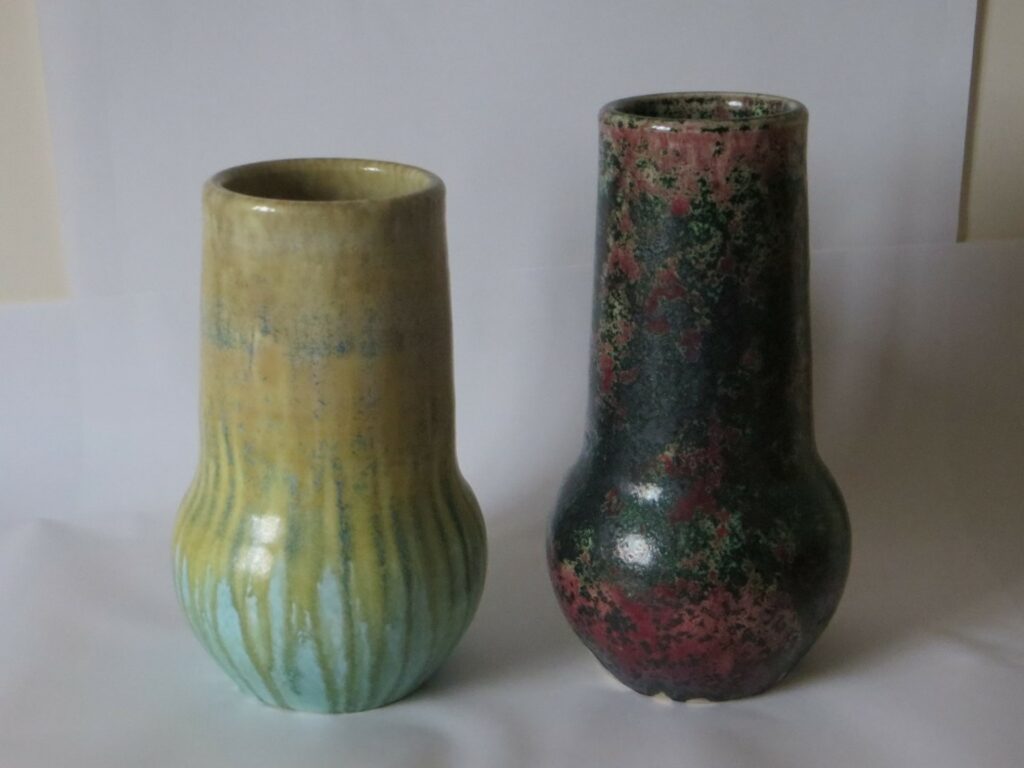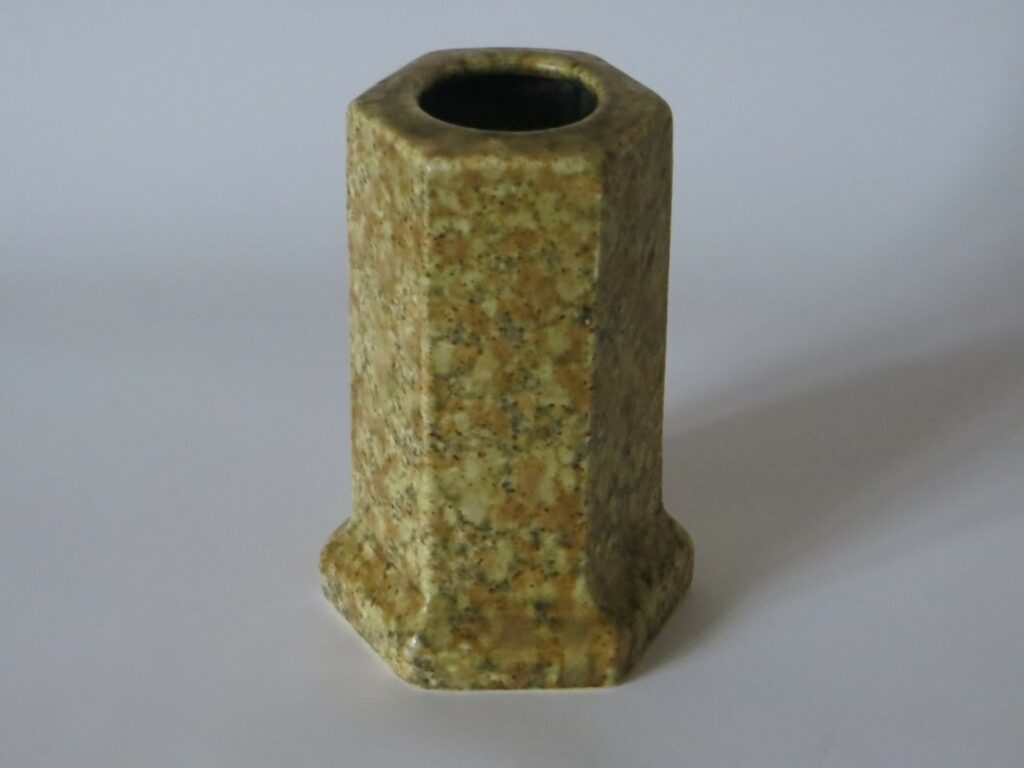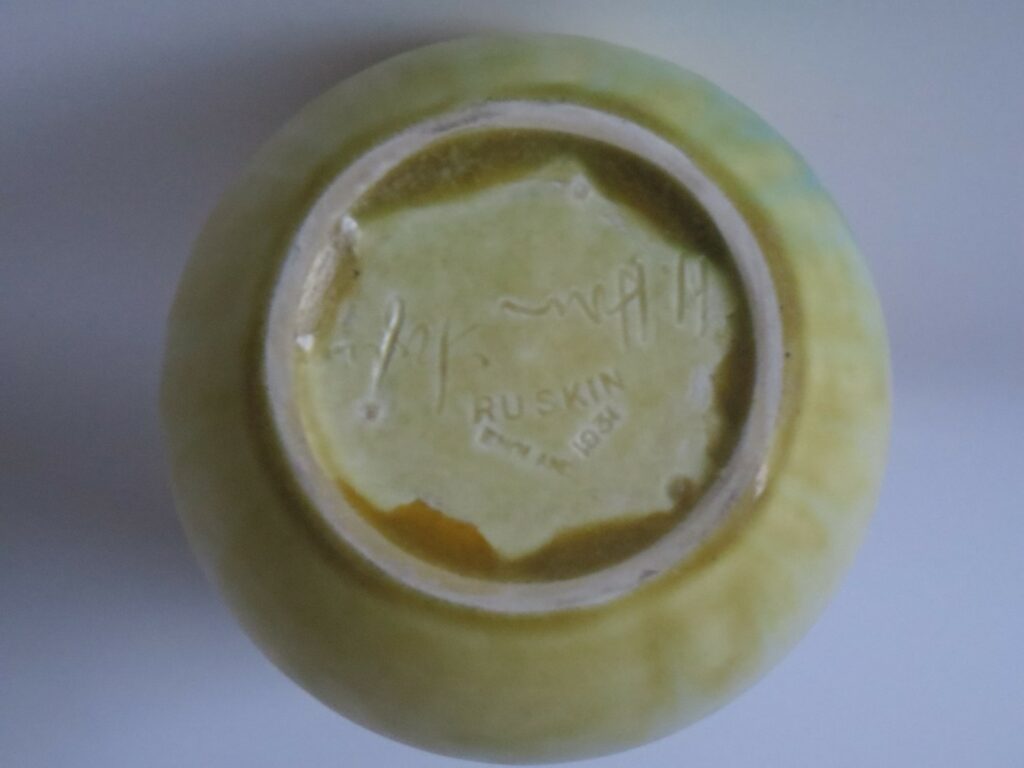Out With the Old, In With the New
It seems that Howson Taylor decided to design a new range wares to supplement and eventually replace the Ruskin Pottery’s successful, standard lustre range. The fashion for lustre wares was in decline by the mid 1920s and so it is significant that the last year of major lustre forms at the pottery was 1926. Perhaps a fall off in sales was a major incentive to develop something new.
In searching for new forms the pottery turned away from work inspired by Chinese designs and instead looked to another tradition remote in space and time, Ancient Egypt; whose artefacts influenced the decorative arts for a time during the 1920s, as a result of the re-discovery of the Tomb of Tutankhamen by Howard Carter in 1922. There were many publications but one especially ‘The Arts and Crafts of Ancient Egypt’ by W.M.F. Petrie is important as the stone vases and a range of pottery forms were illustrated, which provided a style and in some cases shapes which were adapted at Ruskin Pottery for a new Egyptian Ware range as part of their new ‘Art Craft’ series. The thick band around the tip of Egyptian work was adapted for pieces along with rounded and more substantial structures.
No catalogue is know to exist for the complete range but some pieces are included in the ‘Art Craft’ catalogue issued in about 1928. The Pottery Gazette in its February 1928 issue wrote ‘Today, we believe, the demand is chiefly for the production of a heavier type.’ In many of these vases the wreath in the clay created by the throwers thumb and fingers are left in the finished article. Howson Taylor instigated a long series of glaze experiments to go on the new forms. Pots dated 1927, mostly bowls, occasionally appear which have a number in a rectangular reserve on the base. Recorded numbers range from 58 to 1074. These pieces confirm the Pottery Gazette report of 1928 that since last June over 700 experiments have been made by Mr Howson Taylor many of them on the basis of trial and error.’ The glazes developed were mostly of matte or crystalline types. Apart from these experimental pieces examples dated 1927, especially crystalline glazed ones, are not numerous and production glazes would not have become available until 1928.
One of the reasons behind the new range can probably be discerned when examining the prices given in the brochure, where it can be seen that they are more or less the same as those of the pre-war exhibitions, despite the increase in general price levels and wages. Only two 12 inch pieces were over £2 and only two A shapes were over £1. By comparison with other makers’ wares in 1928 the pots still do not appear cheap, although pre-war soufflés were cheaper, but margins had been reduced. However the new pots with no extra firing which lustres required could be made cheaply as a 1930 article noted.
A further attempt to reduce costs was the introduction in the late 1920s of a range of moulded wares, in particular table lamps, using the new glazes. The pottery issued a number of coloured postcards promoting these items, but it would seem with limited success as relatively few examples appear on the market. The crystalline glazes and effects using them represent a major achievement of W. Howson Taylor as until the advent of studio potters in recent decades they are one of the largest and most comprehensive groups of such work.

